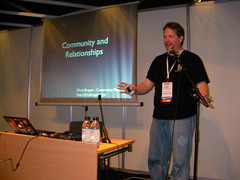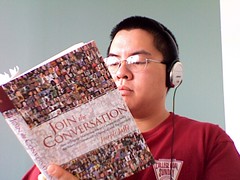I’d been hearing a lot of buzz about this little machine ever since Podshow’s sponsorship of it with a few prominent podcasters I listen to, like CC Chapman and Julien Smith. Yesterday I got to play with one of the boxes, courtesy of Peta Andersen, and I think one of these is in my future soon.
Why?
Take a look at this picture. What do you see?

That’s an n810, and it’s running terminal.
The n810 is a Linux box. Yes, it comes with all the shiny applets and stuff, but it also comes with a Linux distribution called Maemo. Maemo makes the n810 a big deal because it’s a variant of Debian Linux, and that means you get a command line.
Poking around a little more, that terminal is running bash, and apt-get is installed on there.
apt-get, if you’re unfamiliar with Debian Linux, is a package manager that lets you download and install packages from the command line. To install, say, wget, you’d type apt-get install wget when you’re online and the service would do the rest.
Why is this a big deal? Unlike my iPod Touch, which I still love, the n810 is a true portable computer. The existence of a bash shell and apt-get means that I can run most of my marketing software (a lot of the stuff I do is on the command line on my Mac, such as wget, perl, bash scripts, etc.) from a microcomputer in my pocket. That plus a large, tactile keyboard makes this little device a winner.
Now if only I could get a better price than $400…
If you’re a podcaster promoting your show’s coupon codes, you are welcome to post the codes in the comments.
Did you enjoy this blog post? If so, please subscribe right now!



Get this and other great articles from the source at www.ChristopherSPenn.com







 Would I recommend it? If you’re at the journeyman stage of new media marketing, I think Join the Conversation is a worthy addition to your bookshelf. For those who haven’t played Sid Meier’s Pirates!, that’s the second of four stages:
Would I recommend it? If you’re at the journeyman stage of new media marketing, I think Join the Conversation is a worthy addition to your bookshelf. For those who haven’t played Sid Meier’s Pirates!, that’s the second of four stages: